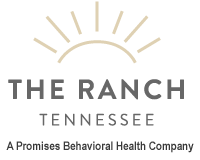The relationship dynamics between people with borderline personality disorder (BPD) and narcissists often spark curiosity and concern. These connections can be intense, often leading to unhealthy cycles that harm both parties. But why do narcissists attract people with BPD? Understanding the psychological traits and interpersonal patterns at play can shed light on these complex relationships and how they can be addressed.
At its core, the attraction between people with BPD and narcissists arises from complementary but dysfunctional needs. People with BPD often struggle with fear of abandonment and a deep need for validation, while narcissists thrive on admiration and control. Although the connection may seem natural on the surface, it’s essential to examine why such relationships are frequently harmful.
Use our online contact form or call 888.483.7718 to learn more about bipolar disorder treatment.
Understanding borderline personality disorder
BPD is a mental health condition marked by emotional instability, intense interpersonal relationships, and an ongoing fear of abandonment. People with BPD often experience rapid mood swings and may idealize or devalue loved ones at a moment’s notice. These emotional highs and lows can make it difficult to maintain stable and healthy relationships.
Typically, people with BPD have a fragile sense of self and rely on external validation to feel secure. These tendencies make them vulnerable to abusive or controlling relationships, as they may ignore red flags to avoid feelings of rejection or loneliness.
Why do narcissists attract people with BPD?
Narcissistic personality disorder (NPD) is characterized by an inflated sense of self-importance, a lack of empathy, and an intense need for validation or admiration from others. People with NPD can be highly charismatic and confident, traits that appeal to people struggling with self-doubt or identity issues—as is often the case with BPD.
For those with BPD, the allure of a narcissist’s charm and assertiveness can feel like a solution to their internal struggles. However, the dynamic that often unfolds is fraught with dysfunction and can result in significant emotional harm.
Two key factors explain why this attraction occurs:
1. Emotional opposites create a toxic cycle
While people with BPD experience emotional dysregulation and insecurity, narcissists often project an air of emotional control and superiority. This dichotomy can create a powerful initial attraction, as people with BPD may subconsciously believe the narcissist can provide the stability they lack. Yet, the exact traits that make narcissists appealing, such as their confidence or charm, often mask controlling or manipulative behaviors that worsen the emotional vulnerability of those with BPD.
2. Fear of abandonment meets a need for control
One of the core challenges for people with BPD is an intense fear of abandonment. Narcissists, on the other hand, may use that fear as leverage to maintain control in a relationship. As the person with BPD becomes more dependent on the narcissist for reassurance and validation, the narcissist secures the ego boost they crave. This dynamic creates a cycle of codependency that can be challenging to escape.
The unique challenges of BPD and narcissist relationships
Although the emotional connection between people with BPD and narcissists might seem strong at first, it’s often rooted in harmful patterns that exacerbate their respective issues. Relationships between these people frequently lead to misunderstandings, manipulations, and emotional pain.
The impact of emotional dysregulation
For those with BPD, controlling emotions can be an ongoing battle. When paired with narcissistic tendencies like a lack of empathy, this can lead to frequent conflicts. The narcissist may blame their partner for the instability in the relationship instead of acknowledging their own role in the dynamic, further diminishing the emotional well-being of the person with BPD.
Exploitation of past trauma
Many people with BPD have histories of trauma or neglect. Narcissists may exploit this vulnerability to maintain control over their partner. For example, they might dismiss the emotions or experiences of their partner, reinforcing feelings of worthlessness or dependency.
Breaking the cycle of harmful relationships
Recognizing the signs of unhealthy dynamics between those with BPD and narcissists is the first step toward healing. Breaking free from these toxic patterns requires intentional effort and professional support.
Seeking therapy for BPD
Therapeutic approaches like dialectical behavior therapy (DBT) and cognitive-behavioral therapy (CBT) have shown significant effectiveness in helping people with BPD develop healthier coping mechanisms. These methods teach techniques for managing emotions, improving communication skills, and establishing boundaries that prevent harmful relationships.
Building self-awareness
Understanding why one is drawn to certain relationship dynamics is important. For people with BPD, working through fears of abandonment and low self-esteem with a licensed therapist can provide the clarity and confidence needed to choose healthier relationships in the future.
Narcissistic behaviors in perspective
It’s also critical to identify and mitigate the impact of narcissistic behaviors in a relationship. Setting firm boundaries, seeking therapy, and fostering self-reliance are vital steps in preventing manipulation and maintaining mental well-being.
Reach out for support today
If you or a loved one is struggling with the cycle of harmful relationships fueled by BPD and narcissistic dynamics, help is available. The Ranch TN provides personalized mental health treatment programs that empower clients on their healing journey. Our compassionate team offers evidence-based therapies to help you develop the tools needed for healthier relationships and a more fulfilling life.
Don’t wait to take the next step. Call us today at 888.483.7718 or use our online contact form to learn how we can support your path to recovery.




